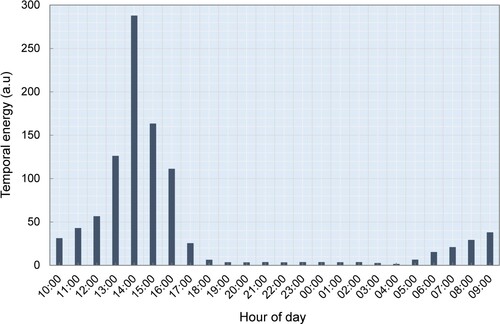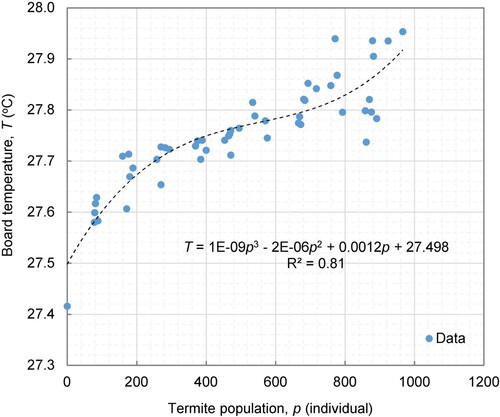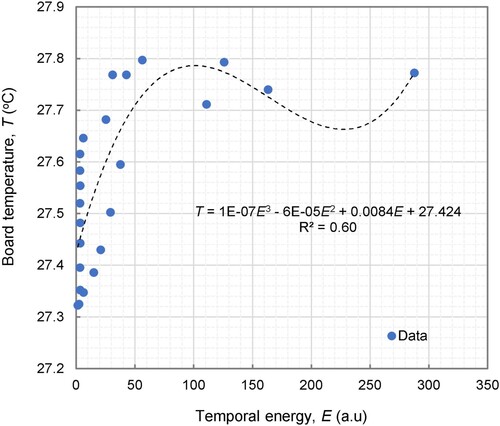Figures & data
Figure 1. Two-dimensional (2D) engineering drawing of the termite detection system, (a) front view; (b) bottom view.
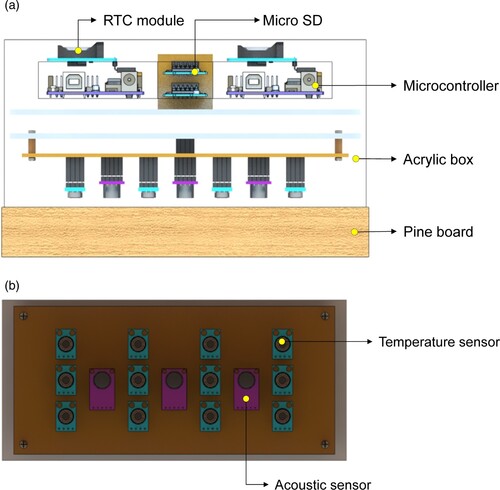
Figure 2. One example of an acoustic signal generated by termite infestation, (a) the termite acoustic signal contains background noise; (b) the purified termite acoustic signal after passing through the noise filter.

Figure 5. The average temperature fluctuations (i.e. ambient, infested, and uninfested) from a continuous record during 24 h.
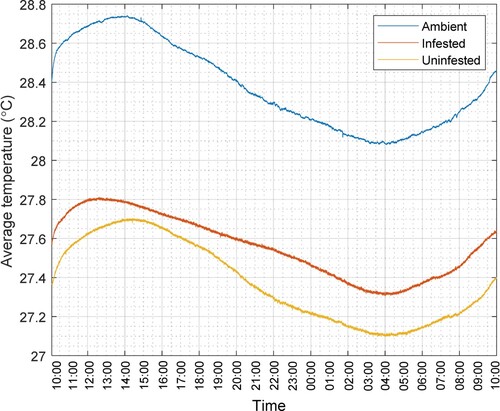
Data availability statement
The data supporting the findings of this study are openly available in Mendeley Data Repository with DOI at http://dx.doi.org/10.17632/n8scbwn6dc.2.

